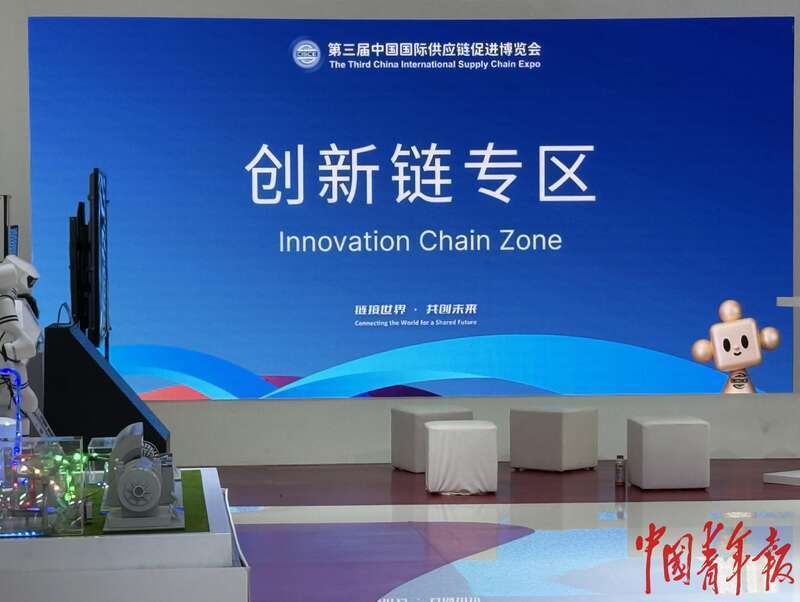

At the recently concluded third China International Supply Chain Expo (CISCE) in Beijing, audiences were dazzled by high-tech products. This edition of the expo also spotlighted a deeper question: how can technological achievements be transformed into powerful drivers of industrial development?
For the first time, this year's CISCE featured a dedicated innovation chain zone. Though modest in size, this area brought together a diverse range of 14 institutions, including the World Intellectual Property Organization and the China National Intellectual Property Administration. These exhibitors represent key players at various stages of science and technology commercialization, from policy-making and technology transfer to innovation incubation. They provide targeted solutions to critical challenges in transforming technological achievements.
In the face of continued global trade uncertainty, Chinese and foreign enterprises must empower industrial and supply chains through innovation to achieve long-term development and breakthroughs, said Cai Tongjuan, Director of the Macro Research Department and Research Fellow of the Chongyang Institute for Financial Studies (RDCY), in an interview with China Youth Daily.

Cai explained that the term "innovation chain" refers to a comprehensive innovation system covering everything from basic research and technological development to the transformation of results and their application in industry. It plays a key role in facilitating the deep integration of scientific and technological innovation with the industrial chain. Running through various stages such as research and development (R&D), design, production and distribution, it accelerates the transformation of new technologies and products into real productivity. It is essential for building a modern industrial system. In line with the trend of the deep reconstruction and high-quality development of the global supply chain, the CISCE emphasizes "innovation". Against the backdrop of geopolitical tensions and mounting technological barriers, the security, stability and sustainability of the supply chain can only be enhanced by improving core competitiveness through scientific and technological innovation.
From Cai's perspective, establishing the innovation chain zone with a focus on 'first release, first show and first exhibition' reflects China's efforts to promote the transformation of scientific and technological achievements. It also provides an open platform for global enterprises to showcase their cutting-edge work and establish connections for future collaboration. Innovation is the driving force behind the CISCE because it is strategically significant in terms of leading the future and creating advantages.
Cai proposed some development suggestions for Chinese and foreign companies from a scholarly perspective, focusing on innovation to empower the industrial and supply chains. Firstly, achieving technological autonomy and making breakthroughs in key areas is significant, as is increasing R&D investment in core technologies, key components, materials, and other fields, in order to reduce dependence on a single source and enhance the autonomy and controllability of the supply chain.
Secondly, digital transformation is an ongoing process. Using big data, artificial intelligence, blockchain and other technologies will improve the visualization, coordination and response speed of the entire supply chain. This will facilitate intelligent manufacturing and smart logistics, while also enhancing resilience to sudden risks.
Thirdly, green and low-carbon development must be prioritized. The focus should be on achieving carbon peak and carbon neutrality goals, promoting the green transformation of the supply chain, innovating in the areas of new energy sources, environmentally friendly materials, and energy-saving processes, and enhancing global market adaptability and competitiveness.
Finally, innovative business models cannot be ignored. Explore new models such as flexible supply, platform operation and C2M (Customer to Manufacturer) in order to respond accurately to market changes and improve the efficiency with which resources are allocated. Embracing innovation will enable enterprises to mitigate short-term risks and capitalize on opportunities, giving them a competitive edge in the face of future global industrial shifts. (By Ma Ziqian/China Youth Daily)
来源:中国青年报客户端
免息配资炒股提示:文章来自网络,不代表本站观点。








